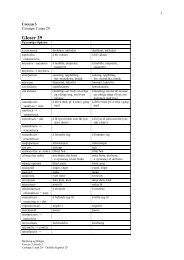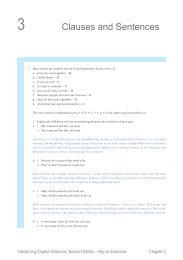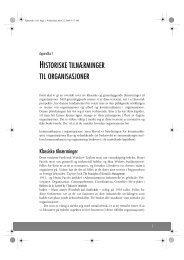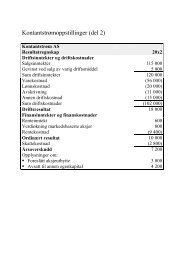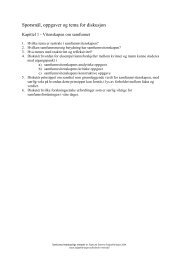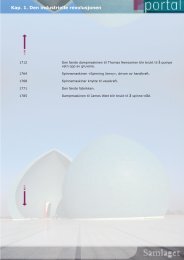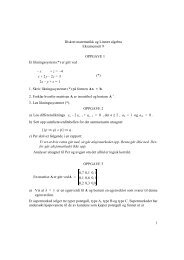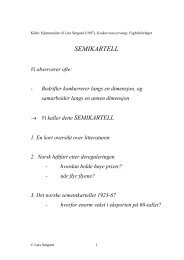price discrimination in the airline industry - Fagbokforlaget
price discrimination in the airline industry - Fagbokforlaget
price discrimination in the airline industry - Fagbokforlaget
Create successful ePaper yourself
Turn your PDF publications into a flip-book with our unique Google optimized e-Paper software.
A <strong>price</strong> <strong>in</strong>crease for <strong>the</strong> group with <strong>price</strong> <strong>in</strong>elastic demand results <strong>in</strong> an <strong>in</strong>crease <strong>in</strong><strong>the</strong> dead weight loss, marked with <strong>the</strong> red (dark) shaded area, while <strong>the</strong> <strong>price</strong> decrease for<strong>the</strong> o<strong>the</strong>r group of consumers results <strong>in</strong> a reduction <strong>in</strong> <strong>the</strong> dead weight loss, marked with<strong>the</strong> blue (light) shaded area. In <strong>the</strong> literature it has been shown that a necessary conditionfor welfare to <strong>in</strong>crease is that total output <strong>in</strong>crease. 6 However, <strong>in</strong> many cases <strong>the</strong>sufficiency condition for welfare improvement is not met. For example, with l<strong>in</strong>eardemand functions third degree <strong>price</strong> <strong>discrim<strong>in</strong>ation</strong> is not welfare improv<strong>in</strong>g (see Varian,1989, Section 2.4.1).Figure 5 Welfare effects of third degree <strong>price</strong> <strong>discrim<strong>in</strong>ation</strong> <strong>in</strong> monopolyPricePriceP 1Welfare lossWelfare ga<strong>in</strong>P 0P 2PRICE INELASTIC CONSUMERS PRICE ELASTIC CONSUMERSMarg. costQuantityQuantityThe crucial question, <strong>the</strong>n, is whe<strong>the</strong>r third degree <strong>price</strong> <strong>discrim<strong>in</strong>ation</strong> implies that somenew groups of consumers are be<strong>in</strong>g served. For example, a group of <strong>price</strong> elasticconsumers may not be served at all <strong>in</strong> a regime with one uniform <strong>price</strong>. The monopolyfirm may f<strong>in</strong>d it more profitable to serve only <strong>the</strong> <strong>price</strong> <strong>in</strong>elastic consumers. If <strong>price</strong>6 See Varian (1989), Section 2.4.1. It is shown that <strong>the</strong> sufficient condition for a welfare improvement is that<strong>the</strong> sum of <strong>the</strong> weighted output changes is positive, with <strong>the</strong> weights be<strong>in</strong>g given by <strong>the</strong> <strong>price</strong>-cost marg<strong>in</strong>.© Steen and Sørgard 13



